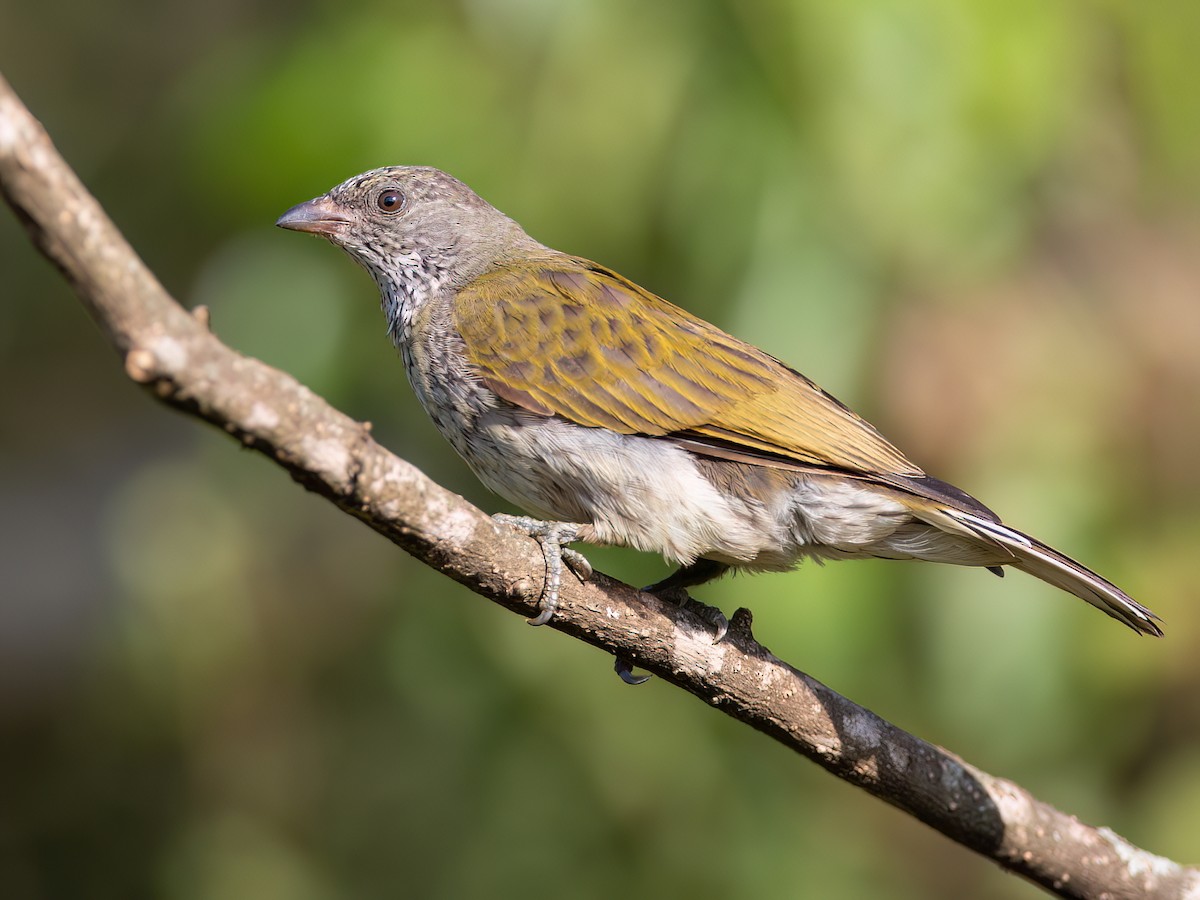
Scaly-throated Honeyguide
Scaly-throated Honeyguide
The Scaly-throated Honeyguide: Nature’s Elusive Avian Whisperer
Introduction
The Scaly-throated Honeyguide (Indicator variegatus) is one of nature’s most intriguing and lesser-known bird species. Native to the dense woodlands and forests of sub-Saharan Africa, this elusive bird is a member of the Indicatoridae family, renowned for its unique behavior of guiding humans and animals to beehives. But the Scaly-throated Honeyguide stands apart—not just for its cryptic plumage and secretive nature, but for the mystique that surrounds its ecology, behavior, and evolutionary adaptations.
In this comprehensive guide, we delve into the world of the Scaly-throated Honeyguide, exploring its habitat, diet, breeding habits, ecological significance, and the myths that surround it. Whether you’re a birdwatcher, a conservationist, or a curious naturalist, this article offers a deep dive into one of Africa’s most fascinating avian species.
Taxonomy and Classification
The Scaly-throated Honeyguide belongs to the order Piciformes, which also includes woodpeckers, toucans, and barbets. Within the family Indicatoridae, it is one of the more cryptic species, often overlooked due to its discreet behavior and subtle coloration.
Scientific Classification:
- Kingdom: Animalia
- Phylum: Chordata
- Class: Aves
- Order: Piciformes
- Family: Indicatoridae
- Genus: Indicator
- Species: Indicator variegatus
The genus name Indicator is derived from the Latin word for “pointer” or “guide”, referencing the honeyguides’ unique behavior of leading mammals to beehives.
Physical Characteristics
The Scaly-throated Honeyguide is a medium-sized bird, measuring approximately 18–20 cm in length. Its plumage is a masterclass in camouflage, with olive-green upperparts and pale, scaly underparts that blend seamlessly into the forest canopy.
Distinctive Features:
- Throat and Breast: Pale with dark scalloping—hence the name “scaly-throated”.
- Eyes: Dark brown, offering a penetrating gaze.
- Bill: Short, stout, and slightly hooked—perfect for prying into wax and soft wood.
- Wings: Rounded with a short tail, aiding maneuverability in dense foliage.
This bird’s subtle beauty lies in its intricate feather patterns rather than vibrant colors, making it a challenge to spot in the wild.
Habitat and Distribution
The Scaly-throated Honeyguide is distributed across a wide swath of sub-Saharan Africa, from Ethiopia and Kenya in the east to Angola and South Africa in the south.
Preferred Habitats:
- Moist Evergreen Forests
- Riverine Woodlands
- Miombo Woodlands
- Forest Edges and Clearings
These birds are typically found at elevations ranging from sea level to 2,000 meters, depending on the region. Their preference for dense, wooded habitats contributes to their elusive nature.
👉 Explore more about African forest ecosystems.
Feeding Behavior
Unlike most birds, honeyguides have a specialized diet that includes beeswax and insect larvae. The Scaly-throated Honeyguide is no exception, although it is less known for leading humans to hives compared to its cousin, the Greater Honeyguide.
Diet Includes:
- Beeswax
- Bee and Wasp Larvae
- Termites
- Ants
- Small Insects
Their digestive system is uniquely adapted to process wax—a rare trait among birds. They often raid abandoned hives or follow other animals to active ones, feeding on the remains.
🔗 Learn about avian dietary adaptations.
Reproductive Strategies
One of the most fascinating aspects of the Scaly-throated Honeyguide is its reproductive behavior. Like other members of its family, it is a brood parasite.
Brood Parasitism Explained:
- The female lays her eggs in the nests of other bird species.
- Host birds raise the honeyguide chick, often at the expense of their own offspring.
- The honeyguide chick may hatch earlier and eliminate competition by ejecting or killing host chicks.
This strategy allows the honeyguide to conserve energy and resources, focusing solely on egg production and survival.
📚 Dive deeper into brood parasitism.
Vocalizations and Communication
The Scaly-throated Honeyguide is more often heard than seen. Its call is a soft, melodious “chirr-chirr-chirr,” repeated at intervals. These calls are used to establish territory and attract mates.
Acoustic Characteristics:
- Frequency Range: Mid to high-pitched
- Call Duration: Short, repetitive bursts
- Behavioral Context: Territorial defense, mate attraction
Birdwatchers often rely on these vocalizations to detect the presence of this secretive bird in dense forest habitats.
🎧 Listen to the Scaly-throated Honeyguide call.
Ecological Role
Although not as famous for guiding humans as its relatives, the Scaly-throated Honeyguide plays a crucial role in forest ecosystems.
Key Contributions:
- Pollination Assistance: By disturbing hives, they may indirectly aid in pollination.
- Insect Control: Their diet helps regulate bee and wasp populations.
- Niche Occupation: Their brood parasitism affects host bird populations, influencing avian community dynamics.
Their presence is a subtle but essential thread in the ecological tapestry of African forests.
🌍 Explore more on avian ecological roles.
Conservation Status
According to the IUCN Red List, the Scaly-throated Honeyguide is currently listed as Least Concern. However, habitat loss due to deforestation and human encroachment poses a growing threat.
Threats:
- Deforestation
- Agricultural Expansion
- Climate Change
- Pesticide Use
Conservation Efforts:
- Protected Areas: Many populations occur in national parks and reserves.
- Habitat Restoration: Reforestation projects aid in preserving their natural environment.
- Research and Monitoring: Better data collection is needed to assess population trends.
🛡️ Support bird conservation initiatives.
Cultural Significance
In African folklore, honeyguides are often revered as mystical creatures. While the Greater Honeyguide is more commonly featured in stories, the Scaly-throated Honeyguide shares in this cultural legacy.
Folklore Themes:
- Guidance and Wisdom
- Spiritual Messengers
- Symbols of Cooperation
Some tribes believe that harming a honeyguide brings bad luck, while others see them as symbols of nature’s hidden intelligence.
📖 Discover more about African bird mythology.
FAQs
1. What makes the Scaly-throated Honeyguide different from other honeyguides?
The Scaly-throated Honeyguide is less likely to guide humans to hives and is more secretive in behavior. Its scaly throat pattern and preference for dense forests distinguish it from other species.
2. Is the Scaly-throated Honeyguide endangered?
No, it is currently listed as Least Concern by the IUCN, though habitat loss is a growing concern.
3. How does it digest beeswax?
It has specialized gut bacteria and enzymes that allow it to break down wax—a rare adaptation among birds.
4. Do honeyguides kill host chicks?
Yes, in many cases, the honeyguide chick will eliminate host offspring to monopolize parental care.
5. Where can I see a Scaly-throated Honeyguide?
They are best observed in protected forest reserves across eastern and southern Africa. Birdwatching tours in Kenya, Tanzania, and South Africa often report sightings.
Conclusion
The Scaly-throated Honeyguide is a testament to the complexity and wonder of avian evolution. From its cryptic plumage to its parasitic breeding strategy, it challenges our understanding of bird behavior and ecological balance. As forests continue to shrink, the need to protect such enigmatic species becomes ever more urgent.
By learning about and appreciating the Scaly-throated Honeyguide, we take a step toward preserving the intricate web of life that sustains our planet. Let this bird be a whispering guide—not just to honey, but to harmony with nature.
